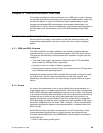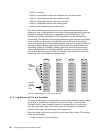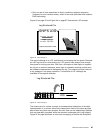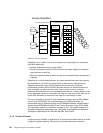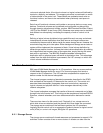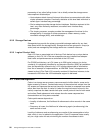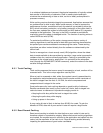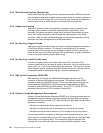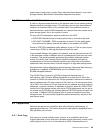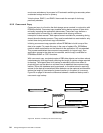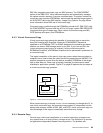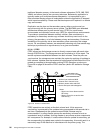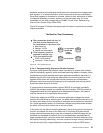
90 Storage Management with DB2 for OS/390
processing of any other failing cluster. Let us briefly review the storage server
subcomponent relationships:
•
Host adapters attach channel links and allow them to communicate with either
cluster-processor complex. Practically, statistics at this level deal with what is
called
upper interface busy percentage.
•
Device adapters provide storage device interfaces. Statistics captured at this
level, very often indirectly measured, are called
lower interface busy
percentage.
•The
cluster-processor complex provides the management functions for the
storage facility. It consists of cluster processors, cluster memory, cache,
nonvolatile storage (NVS), and related logic.
9.2.2 Storage Devices
Storage devices provide the primary nonvolatile storage medium for any host
data stored within the storage facility. Storage devices are grouped in
arrays (or
ranks) and are managed by the storage server as a common resource.
9.2.3 Logical Control Unit
Each LCU has an associated set of devices. Each device has a unique device
address on the LCU. All LCUs are accessible over any installed host adapter.
Host traffic and performance are controlled at the LCU level.
For OS/390 architecture, an LCU views up to 256
logical volumes (or device
numbers)
; it is physically identified by a subsystem identifier (SSID) at installation
time, but dynamically referred to by a
LCU number determined at initialization
time. As an example of implementation, an IBM RVA Turbo 2 storage server is
viewed as four LCUs. Each LCU currently contains 64 functional volumes, to be
increased to 256 when the 1024 addresses support is delivered.
9.3 Cache Management
Cache is a storage server memory resource used to buffer data for reuse and a
faster access by channel. Cache masks many of the mechanical actions from the
I/O access and improves the service time when the data is accessed from cache
rather than from the disk. A cache hit (when the required record is found in the
cache) comprises the data transfer time plus a small protocol time for both reads
and writes. Read misses and write misses have the same response time
characteristics as if they were uncached.
Cache performance depends on:
• Locality of reference, the likelihood of references to other records in the same
track
• Frequency of reuse, the likelihood of referencing again (re-referencing) the
same record or track
Locality of reference and re-referencing are results of the access pattern to the
data, which in turn is related to the application. Fast I/O response times usually
rely on a high cache hit rate, minimizing the number of accesses to disk.






